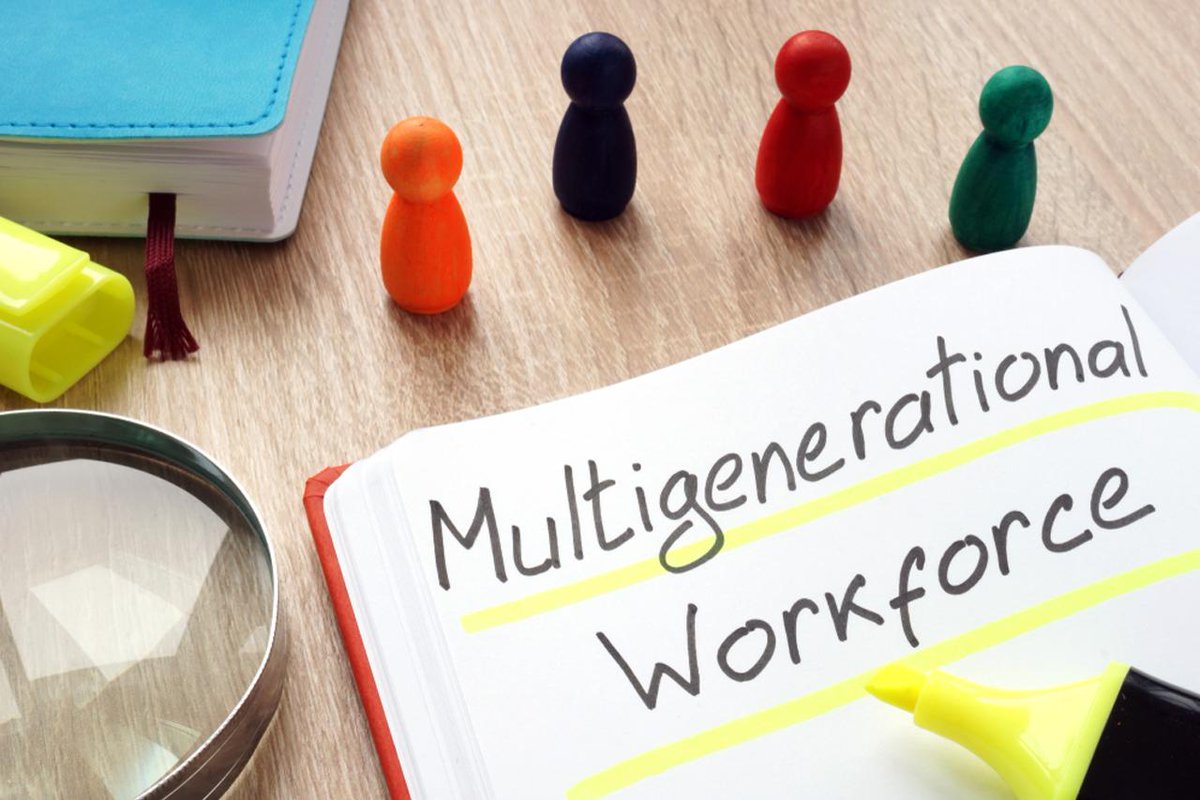
A multigenerational workforce is a team comprised of people from several generations. The average lifespan for humans has been steadily increasing which has resulted in more individuals choosing to work well past the ‘typical’ retirement age.
The age diversity in the workforce overall, is currently the widest ever. This means that it is now common for organizations to have employees working side-by-side who represent four to five generations.
These generational groups are defined as:
- Silent Generation (Traditionalists) – born 1928-1945
- Baby Boomers – born 1946-1964
- Generation X – born 1965-1980
- Generation Y (Millennials) – born 1981-1996
- Generation Z – born 1997-2012
Progressive leaders should consider all age groups during succession and strategic workforce planning to find the best ways to attract, engage, retain, and develop employees from various life stages; and there are several benefits and advantages a multigenerational workforce can bring to your organization.
Including a range of ages in your staff adds value to the organization in several ways. Younger employees are accustomed to rapidly developing technology and adapting to the changes it drives. On the other hand, mature employees have knowledge from the duration of their experience that can guide decision-making. The collaboration of fresh innovation with wisdom from experience brings increased productivity. The synergy and quantifiable results created within a well-led multigenerational team can be very beneficial to both employees and employers.

The importance of understanding your multigenerational workforce and best practices for engaging these employees, while providing an exceptional employee experience is integral to the success of a multigenerational team. This phenomenon is being investigated and analyzed by many employers as they understand that different generations have different needs, wants and expectations from their employers.
Some benefits of a multigenerational workforce benefits include:
- Multiple perspectives
- Effective problem-solving abilities
- Learning/mentoring opportunities
- Knowledge transfer and retention
- Unique relationships
Managing a multigenerational workforce can have its challenges. Issues regarding communication, negative stereotypes, confirmation bias; and varying employee expectations are a few of the most common roadblocks but these issues can be worked through with the proper training and coaching. The positive outcomes outweigh the challenges. HR is instrumental in making sure the company bridges the generational gap and has efficient, cohesive teams.
Overcoming multigenerational workforce challenges to reap the benefits requires:
- Effective leaders and managers
- Workplace visibility and transparency
- Internal communications
- Access to information
- Mobile access
- Technological tools
- Concise company goals and strategy (and awareness of these goals and strategic objectives)
- Sense of purpose and sharing of ‘voice’
- Knowledge-sharing
- Brand ambassadorship
Some management practices for leading a multigenerational workforce include:
- Working on your Employee Value Proposition (EVP) – i.e., offering a variety of benefits that different age groups consider important and beneficial
- Fine-tuning your inclusive hiring process
- Catering to different communication styles
- Accommodating diverse working styles and needs
- Combating bias and stereotypes
- Collecting feedback
- Creating learning opportunities
- Nurturing an inclusive environment at work
Your internal communications strategy should take into account multigenerational workforce communication styles. Different generations have different preferences around how they like to receive and consume information and it is up to employers to do their due diligence in uncovering what those needs are for every employee.
Employers need to understand that when it comes to workplace communications, there is no ‘one-size-fits-all’ approach. Corporate communications professionals need to clearly define their employee personas to find the best ways to reach the right employees at the right time, via the right channels, with the right message; relevant to what they do. Rapid changes in the past few years are reshaping the way employees expect to be informed in the workplace.
It is not an easy task but the results and the corporate culture this breeds, will be worth the effort and will create a competitive edge in your organization; one that is unique and difficult to mimic.


Effie Tsergas
Founding Principal, Managing HR Director
Effie has been a champion of positive organizational behavior for over thirty years. She founded TSERGAS Human Capital over 10 years ago. Aside from her “effervescent” personality and unwavering commitment to HR best practices, Effie is well-known for her work with some of the top legal firms in Canada. She assists clients across various industries with everything from targeted, direct recruitment, strategic human resources planning; and change management initiatives. With a wealth of experience in human resources, workplace investigations, law, public relations, and marketing communications, Effie is a seasoned strategist with expertise you can bank on.